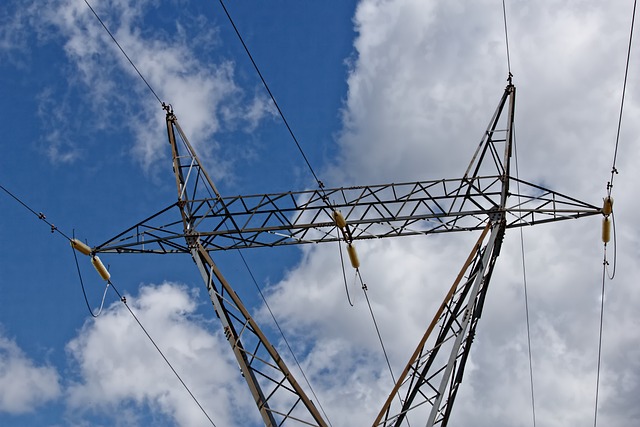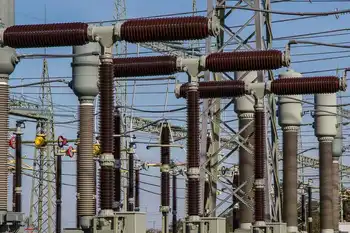Studies show reactor victims will benefit
By National Post
NFPA 70e Training - Arc Flash
Our customized live online or in‑person group training can be delivered to your staff at your location.

- Live Online
- 6 hours Instructor-led
- Group Training Available
While the torment is understandable, based on the reported amounts of radiation released, it is uncalled for. The evidence from Japan’s populace — inadvertent guinea pigs in the largest radiation experiment ever, in the aftermath of the atomic bombings of Hiroshima and Nagasaki in 1945 — indicates that fears over radiation can be overblown.
Those who survived the immediate atomic blasts but were near Ground Zero died at a high rate from excess exposure to radiation. The tens of thousands more distant from Ground Zero, and who received lower exposures to radiation, did not die in droves. To the contrary, and surprisingly, they outlived their counterparts in the general population who received no exposure to radiation from the blasts.
These findings come from the Atomic Bomb Disease Institute of the Nagasaki University School of Medicine, which has been analyzing the medical records of survivors continuously since 1968. The voluminous records — based in part on the free twice-a-year medical examinations that 83,050 registered Nagasaki survivors received — provided the researchers with a database of 2.5 million examination items to mine. To determine how the survivors fared, the researchers compared the survivors with Japanese men and women of the same age who had not been exposed to radiation.
“Among about 100,000 A-bomb survivors registered at Nagasaki University School of Medicine, male subjects exposed to 31-40 cGy [centigrays] showed significantly lower mortality from non-cancerous diseases than age-matched unexposed males,” the researchers found. “And the death rate for exposed male and female was smaller than that for unexposed.” The 31-40 cGy is a measure of radiation absorption higher than the general population in the vicinity of the plants is likely to have received.
The University of Nagasaki study, whose results were consistent with other studies done of the A-bomb survivors, found that high exposures to radiation kill while moderate exposures provide overall general health benefits. While some levels of low exposure did produce a small number of additional cancer deaths, these cancer deaths were more than offset by lower death rates from other causes, such as heart disease and circulatory ailments. The study’s bottom line: “the low doses of A-bomb radiation increased lifespan of A-bomb survivors.”
Other studies of A-bomb survivors, which sliced the data in different ways, have also found encouraging news. Those exposed to fewer than 20 cGy of radiation experienced fewer cancer deaths than the general population. The unborn — thought to be at especial risk — showed no adverse effects under 10 cGy. And no genetic defects were found among the 90,000 children and grandchildren of survivor parents who were exposed to average doses of 40 cGy to 60 cGy. Based on the information available to date, all these exposures exceed those the general population in the vicinity of the Fukushima plant is likely to have received.
The real-life studies of Hiroshima and Nagasaki survivors indicate that radiation affects the human body much as arsenic, sodium and many other substances do — they are beneficial in small doses, but can be harmful in overdoses. Yet the conventional scientific wisdom rejects these studies, and a multitude of other real-life studies, in favour of what is known as the Linear No-Threshold Assumption. Under this assumption, all exposure to radiation, no matter how small, is harmful in direct proportion to the dose. It is called an assumption because there is no proof of its validity. In fact, the scientists who espouse it freely admit that no proof for their assumption can ever be had because the risk is too small to measure statistically. In the absence of proof, they say, the only safe course is to assume danger.
Yet assuming danger where none exists is in itself dangerous, particularly in a country with the culture of Japan. The atomic bomb survivors were known as hibakusha or “explosion-affected people”— a stigma connoting damaged goods that made them less marriageable, less worthy of association, and less worthy even in their own minds. Even if those recently irradiated by Fukushima escape this epithet, the burden of living in fear for their health and that of their offspring could be great.
Damage to the psyche aside, some 200,000 people have been evacuated from 10 towns in the vicinity of the nuclear plant, many of whom now find themselves in poorly heated makeshift shelters where they must make do without adequate food and water, and numerous others have been told to stay indoors. Worse, if the budding panic over radiation spreads, the region around Fukushima — one of Japan’s most productive farming areas — may be tainted or even abandoned for agriculture. The Japanese government has already banned the sale of milk and spinach produced in the plant’s environs, and consumers in other countries, fearing contamination, are shying away from all Japanese produce.
The only evidence that exists as to the health of humans who have been irradiated at low levels points to a benefit, not a harm. Difficult though it may be to overcome the fear of radiation that has been drubbed into us since childhood, there is no scientific proof whatsoever to view the radiation emitted from the Fukushima plant as dangerous to the Japanese population, and certainly no reason for the Japanese to view those living near the plant as damaged goods. In all likelihood, though, many will nevertheless be viewed as such. If so, that will be one more tragedy heaped among the others that the affected Japanese population will need to endure.











